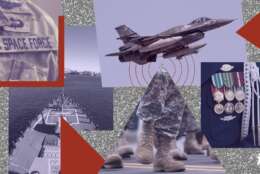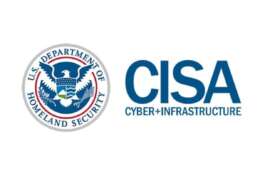Hubbard Radio Washington DC, LLC. All rights reserved. This website is not intended for users located within the European Economic Area.
Ask the CIO Podcasts
-
Eric Mill, director of cloud strategy at GSA, said comments on the draft Emerging Technology Framework are key to ensuring their decision process is correct.
March 08, 2024 -
Col. Michael Medgyessy, the CIO of Air Force Intelligence Office, is putting in IT to solve problems more quickly and drive decision making to the edge.
March 01, 2024 -
One of Jennifer Edgin's, the Navy's assistant deputy chief of naval operations for information warfare, goals is to ensure technology is onboarded quickly and is always modernized.
February 22, 2024 -
Michael Derrios, the senior procurement executive at the State Department, said he’s building acquisition centers across four major lines of business.
February 09, 2024 -
Mike Shepherd, the director of the catalog management office at GSA, said the next step for the catalog modernization effort is to bring in service contractors.
February 05, 2024 -
Luis Lopez, the Education Department’s chief information officer, said the new customer advisory council is helping drive technology modernization decisions across the agency.
January 30, 2024 -
Yvette Bourcicot, the principal deputy assistant secretary of the Army for Manpower and Reserve Affairs, said with 500 occupations separated into 11 career fields, the service is reimagining how it attracts, retains and develops civilian employees.
January 19, 2024 -
Matt House, the program manager for the continuous diagnostics and mitigation program at CISA, said the governmentwide dashboard is in a good place in terms of capability and usage across the government.
January 15, 2024 -
The Energy Department created standard training courses to ensure employees have a baseline understanding of zero trust requirements, while the CFBP is focused on software development, including open source software.
December 29, 2023 -
Tom Howder, the soon-to-be acting commissioner of the Federal Acquisition Service at GSA, said expanding the Transactional Data Reporting (TDR) program is one of several new priorities for fiscal 2024.
December 27, 2023 -
Jason Mervyn, a lead IT specialist for the US Mint at West Point, said the agency is figuring out how back end operational technology systems can continue to run without legacy telecommunications technology.
December 11, 2023 -
Andre Mendes, the Commerce Department’s chief information officer, said through the use of Technology Business Management framework, the agency has well over 90% of their IT costs categorized properly and in the right towers, which is a huge change.
December 01, 2023 -
Bill Hepworth, deputy program executive officer for the Army’s program executive office enterprise information systems (PEO-EIS), said after testing out the new contract writing system with 100 users, the plan is to triple that number in early 2024.
November 20, 2023 -
Eric Hysen, the DHS chief information officer, and Dana Chisnell, the director of CX, are expanding their priorities areas to include more customer and employee experience goals as outlined in a new IT strategic plan.
November 06, 2023
ASK THE CIO

THURSDAYS @ 10 & 2 p.m.
Weekly interviews with federal agency chief information officers about the latest directives, challenges and successes. Follow Jason on Twitter. Subscribe on Apple Podcasts or Podcast One.
















